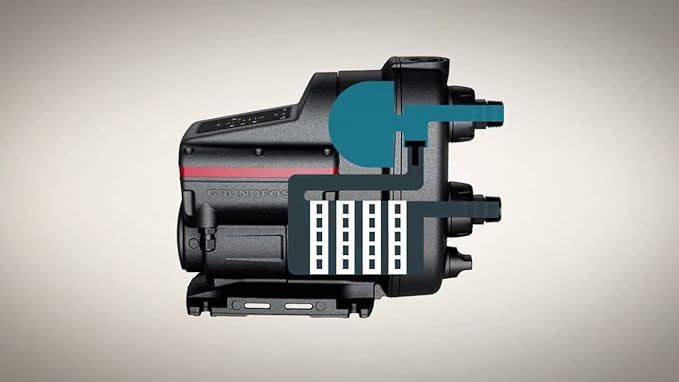What Is a Booster Pump?
Grundfos 98562818 SCALA2 3-45 AVCBDF 1x115V 60Hz Pressure Boosting Pump, Check The Price >>>
A booster pump is a device designed to increase water pressure in various applications. As the name suggests, it “boosts” the water pressure to ensure efficient operation in areas with low or insufficient water pressure. Common uses of booster pumps include:
- Water heater boosting
- Pressurizing water in high-rise buildings
- Ensuring adequate pressure in low-water-pressure areas
- Enhancing water flow in saunas and bathrooms
- Pressurizing water to the top floors of apartments
- Solar automatic pressurization
- Increasing pressure in reverse osmosis water purification systems
Types of Booster Pumps
Booster pumps come in different types, each tailored for specific applications and environments. Below are the main classifications:
1. Biogas-Type Booster Pumps
Biogas-type booster pumps use gas to increase pressure, typically in environments where the air pressure is too low for normal operations. The pump operates by using the low air pressure from a large piston to generate high hydraulic pressure through a smaller piston. These pumps are commonly used in:
- Machine tool chuck clamping
- Accumulator charging
- High-pressure bottle charging
- Converting low-pressure gas into high-pressure gas
These pumps are gas-driven, spark-free, and arc-free, making them ideal for environments where flammable or explosive gases or liquids are present. They can operate using a variety of gas sources such as compressed air, nitrogen, water vapor, or natural gas.
2. Gas-Liquid Booster Pumps
A gas-liquid booster pump works by using gas to drive the liquid pump. It stops automatically once the pressure balance is restored. These pumps are commonly used in industries requiring consistent pressure regulation. The key features include:
- Air drive: The pump body is made of aluminum alloy, while the parts in contact with the liquid are either carbon steel or stainless steel, depending on the media.
- Automatic operation: The pump uses a single gas-controlled unbalanced gas distribution valve to perform automatic reciprocating actions.
- High-quality seals: These are made from imported materials, ensuring long-lasting performance and reliability.
3. Air Booster Pumps
Air booster pumps are designed to increase the air pressure in a system. They operate by using low-pressure air from a larger piston to generate high-pressure air in a smaller piston. These pumps are commonly used in environments where boosting air pressure is required. Benefits include:
- Pressure increase: The pump can increase air pressure by 2-5 times.
- No power supply required: Ideal for environments where electrical power is not available.
- Explosion-proof: These pumps can be used in hazardous environments without risk of sparks or arcs.
- Adjustable pressure: The output pressure can be regulated via a regulating valve.
4. Chlorine Gas Booster Pumps
Chlorine gas booster pumps are specifically designed to handle high-pressure environments where chlorine gas or similar substances are used. These pumps feature:
- Wide working pressure range: The pressure can reach up to 90 MPa.
- Adjustable flow: The air intake volume can be adjusted to modify the flow rate.
- Automatic pressure restoration: If the system experiences a drop in pressure, the pump will automatically restart to maintain a consistent pressure.
- Safe operation: The pumps are driven by gas and are spark-free, making them suitable for use in hazardous areas.
Working Principle of Booster Pumps
Booster pumps operate on a simple principle: centrifugal force. Here’s how they work:
- Liquid Filling: The booster pump is filled with liquid.
- Centrifugal Action: The impeller rotates rapidly, forcing the liquid to the outer edges due to inertia. The liquid is sucked into the impeller from the suction chamber.
- Pressure Build-up: As the liquid flows around the impeller blades, a lift force is applied, increasing the kinetic and pressure energy of the liquid, allowing it to flow out with increased pressure.
For gas-liquid booster pumps, the working principle is similar. The low pressure from a large-diameter air-driven piston generates high pressure in a smaller piston. This high pressure forces the liquid out continuously. Once the pressure balance is reached, the pump will stop automatically, conserving energy and air.
Key Features of Gas-Liquid Booster Pumps:
- Automatic operation: The pump operates automatically to ensure consistent pressure.
- Energy-efficient: The pump only uses air when needed, preventing unnecessary consumption.
Conclusion: Booster pumps are vital for enhancing water, air, or gas pressure in various industrial, residential, and commercial applications. Understanding the types and working principles of booster pumps helps ensure the right choice for your specific needs.

